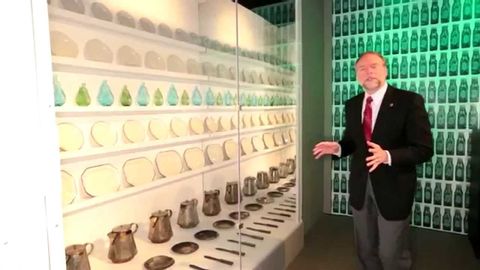導遊--匹茲堡失落的汽船,阿拉伯的寶藏。 (Guided Tour - Pittsburgh's Lost Steamboat, Treasures of the Arabia)
Amy.Lin 發佈於 2021 年 01 月 14 日  沒有此條件下的單字
沒有此條件下的單字US /məˈtɪriəl/
・
UK /məˈtɪəriəl/
- n. (c./u.)布料;素材;資料;材料;物質
- adj.重要的;物質的
US /vəˈraɪɪti/
・
UK /və'raɪətɪ/
US /ˈkɚrənt, ˈkʌr-/
・
UK /'kʌrənt/
- n. (u.)電流;流量;流通貨幣
- adj.目前的;通用的;被普遍接受的;有效的;最新的
- n.趨勢;潮流;輿論
- n. (c./u.)公寓;(某物的)平面部分;降調;平底鞋
- v.t./i.合租;失敗
- adv.斷然地;固定不動地
- adj.平整;沒有活力的;洩氣的;走了氣的;固定的;無光澤的;平淡的;平面的

